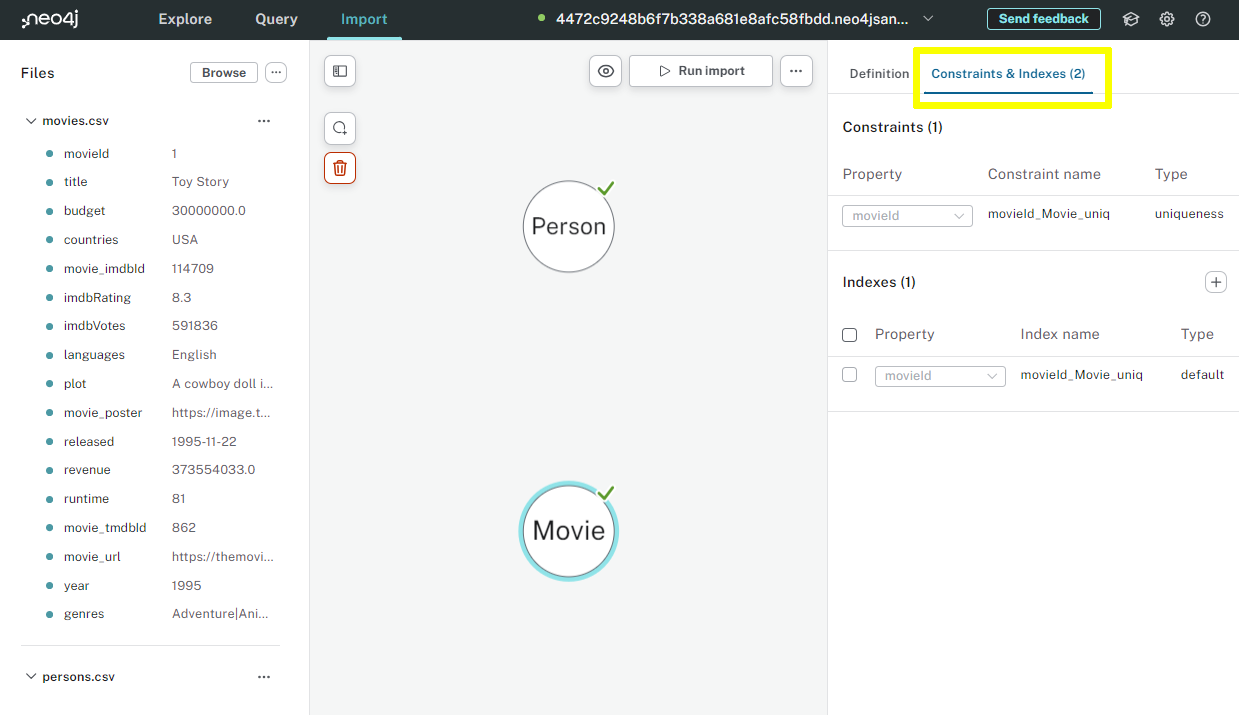In the previous lessons, you set a unique ID when creating nodes.
In this lesson, you will explore the importance of unique IDs, constraints and indexes.
When you set a unique ID, Data Importer will automatically create a constraint and index for the property.
You can view the constraints and indexes by selecting a node and switching to the Constraints & Indexes tab.

Constraints
The constraint ensures the property is unique for all nodes with that label.
Setting the unique ID for the Movie node to movieId, a unique constraint named movieId_Movie_uniq is created against the movieId property.
Creating a new node with the same movieId will result in an error.
Setting the unique ID in Data Importer ensures that already existing nodes will be updated using MERGE rather than creating new nodes using CREATE.
Indexes
When you query data, indexes improve performance by quickly finding the nodes with the specified property.
An index is created automatically for the unique ID property.
For example, the index movieId_Movie_uniq will be created for the movieId property on the Movie node.
You can use Data Importer to create additional indexes for other properties.
Adding an index to the title property on the Movie node will increase the speed of queries using movie title:
-
Click the
+button under theIndexessection to add a new index.
-
Select the property
title.
An index named
title_Moviewill be created for you. -
Run the import to create the index.
default index type. In Neo4j 5, the default is a RANGE index.You can view the indexes created in Neo4j by running the following Cypher:
SHOW INDEXESYou should see an index named title_Movie for the title property on the Movie node.
Optional indexes activity
Try creating a new index for the name property on the Person node.
You will need to:
-
Select the
Personnode. -
Add a new index using
+under theIndexessection. -
Select the
nameproperty. -
Run the import to create the index.
When running the SHOW INDEXES Cypher, you should see a new index named name_Person.
Check Your Understanding
Setting a Unique ID
When you set a unique ID, Data Importer will automatically create a …
-
❏ Constraint
-
❏ Index
-
✓ Constraint and Index
-
❏ None of the above
Hint
A constraint will ensure a Unique ID is unique. An index will help speed up queries.
Solution
When you set a unique ID, Data Importer will automatically create a Constraint and Index.
Summary
In this lesson, you learned about unique IDs, constraints, and indexes.
In the next lesson, you will learn how to create relationships.